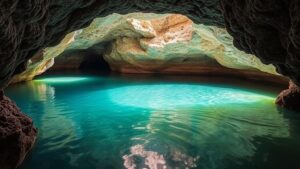Following tales of lost Arctic civilizations buried under the ice.
Following Tales of Lost Arctic Civilizations Buried Under the Ice
The Arctic has long been the subject of intrigue, not just for its breathtaking landscapes but also for the mysterious civilizations believed to have once thrived beneath its ice. From lost hunting grounds to advanced societies, the tales of these lost Arctic civilizations challenge our understanding of human adaptation in extreme environments. This article delves into these legends, offering a glimpse into the past and examining archaeological findings that bolster these captivating narratives.
Historical Context
Understanding the tales of lost Arctic civilizations requires us to first acknowledge the climate history of the region. Arctic has experienced significant climatic changes over millennia. For example, during the Holocene epoch, approximately 10,000 years ago, warmer temperatures made it possible for humans to inhabit areas now covered by ice.
Archaeological evidence suggests that ancient peoples, such as the Thule culture, occupied the Arctic regions from around 1000 AD onwards, known for their complex societies, advanced hunting techniques, and communal living practices. Yet, the legend of earlier, more enigmatic civilizations buried under ice has lingered, evoking curiosity and exploration.
The Discovery of Remnants
In the face of climate change, innovative technologies are enabling scientists to uncover remnants of ancient civilizations that were once hidden beneath thick ice sheets. One significant find occurred in 2018 when researchers detected an ancient site on the sea floor near Greenland, estimated to date back over 2,000 years.
Geophysical surveys revealed stone structures, which may indicate a once-thriving civilization with intricate building techniques similar to those of early Inuit communities. These structures offer a tangible connection to the past and suggest that civilization in the Arctic is older and more complex than previously assumed.
Climate Change and Its Impact on Archaeological Discoveries
The ongoing climate crisis is both a curse and a blessing when it comes to discovering lost civilizations. As ice melts in the Arctic, areas that had been unreachable are now becoming accessible. For example, researchers have discovered well-preserved artifacts, including tools, clothing, and even remnants of food, that provide insights into the lifestyle of these ancient peoples.
For example, the ‘Birch Bark Project’ on Canada’s Baffin Island, initiated in 2020, is aimed at studying traditional Inuit culture. The project has unveiled ancient hunting sites, showcasing how these communities expertly relied on marine mammals for survival.
Real-World Applications
The knowledge gained from studying these lost civilizations has significant implications. Understanding how ancient communities adapted to harsh environmental conditions can provide valuable lessons in resilience for contemporary society, especially as we face similar challenges today. e lessons can be applied in various fields, including:
- Climate Science: Understanding resilience strategies from the past can aid in developing better climate change adaptation strategies.
- Archaeology: Insights from ancient building techniques can inform modern sustainable architecture.
- Cultural Studies: Learning about the interactions of ancient peoples with their environment can foster a greater appreciation for Indigenous knowledge systems.
The Broader Implications of Lost Civilizations
The myths surrounding lost Arctic civilizations pose questions about what is known and what remains undiscovered. As archaeological methods evolve, the possibility of uncovering more remains a reality, prompting discussions on historical narratives and cultural identity that shape current societal views.
Plus, investigating these tales helps to decolonize Arctic history, allowing for multiple perspectives, particularly from the first peoples of the region, to be included and valued. This approach not only enriches our understanding of history but also empowers Indigenous communities in their cultural preservation efforts.
Conclusion: The Quest for Knowledge
The tales of lost Arctic civilizations remind us of the intrinsic human desire to explore and understand our world. As we continue to face changes in our environment, the lessons learned from these ancient peoples become all the more vital. The ongoing quest for knowledge through archaeological endeavors has the potential to dramatically reshape our understanding of history, survival strategies, and cultural significance.
To wrap up, as ice melts and new findings emerge, the Arctic remains a treasure trove for those willing to delve into its depths, uncover its mysteries, and honor the rich tapestry of human history interwoven with its icy terrain.


